Spicy-glazed Roasted Chicken: Slower Cooking for Tender Results
Every time of year is the right time to roast a chicken. Winter feasts, January cleanses, and Sunday dinners in summer are all well punctuated by a tender, savory roast bird.
Today we’re bringing you a recipe for roast chicken that is slightly different. We’re not going for ultra-crisp skin or fast cook time of a spatchcocked bird, but are instead opting for a slow-roasted chicken with a savory, mildly spicy coating and a side of tender-cooked potatoes. It’s easy to make and comes out super tender if you use a leave-in probe thermometer to keep track of the doneness. Take a look at the process and give it a try!
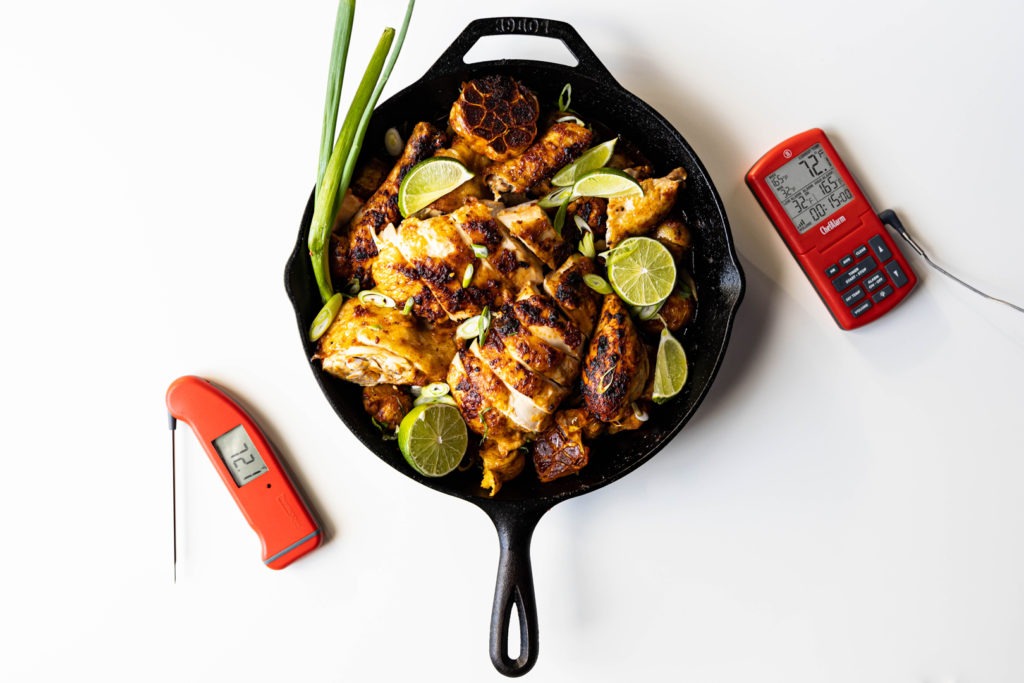
Slow-roasted chicken
Our standard recommendation for roasting chicken is to preheat your oven to 500°F (260°C) and turn the heat down to 350°F (177°C) as soon as you put the chicken in. This high-temp approach guarantees crispy skin and a relatively speedy cook time. However, in this case, we abandon that method in favor of a lower, slower approach. Cooking the chicken at 300°F (149°C) lets the whole bird, especially the breasts, cook gently to maximize tenderness. At that temperature, it’s easy to not accidentally blow past the recommended pull temp for the breasts of 157°F (69°C).
Now, if you think that 157°F (69°C) sounds like undercooked chicken, it’s likely because you’ve heard the USDA recommend 165°F (74°C) as a final temp for food-safe chicken. But even the USDA preaches that food safety is a function of both time and temperature, not just temperature alone, and they give their blessing that chicken cooked to 157°F (69°C) is perfectly safe after staying at that temp for only 34 seconds! For more on this topic, see our post all about chicken temperatures.
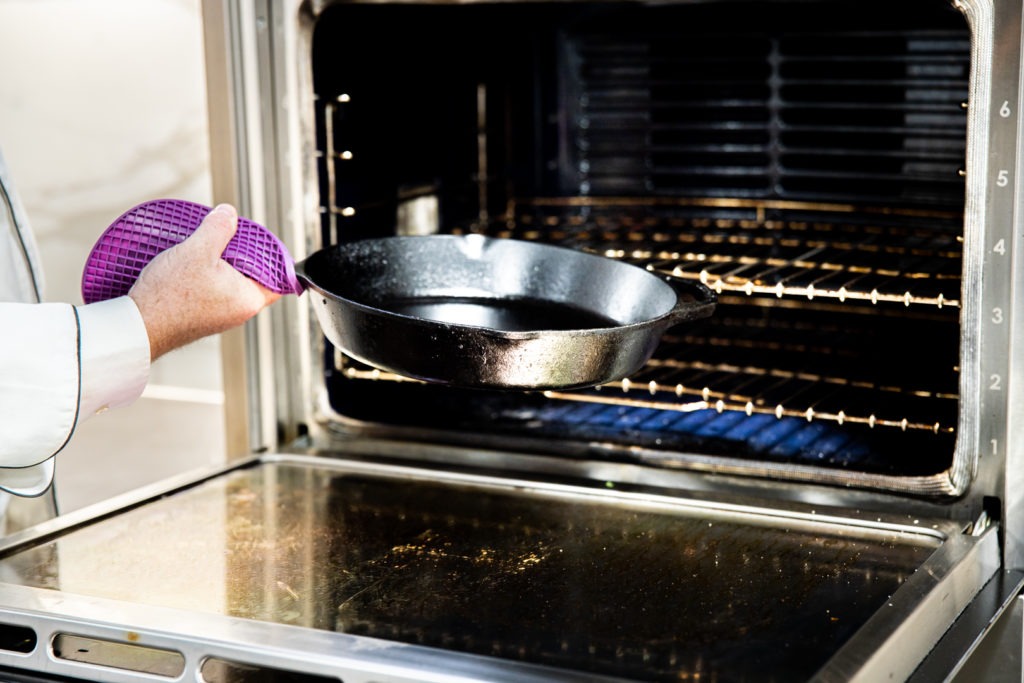
But what about the thighs? If you’ve spent much time on our blog, you know that poultry dark meat should be cooked to a higher temperature, not for the sake of safety but for the sake of enjoyment. 175°F (79°C) or higher is best. To achieve that temperature without overcooking the breasts, we’ll employ a smart thermal strategy and preheat our cast-iron skillet with the oven. By heating the skillet, we introduce a radiant heat source underneath the bird, close to where the thigh meat sits! This will give the dark meat a thermal jump-start and land us closer to the higher finish temp we want.
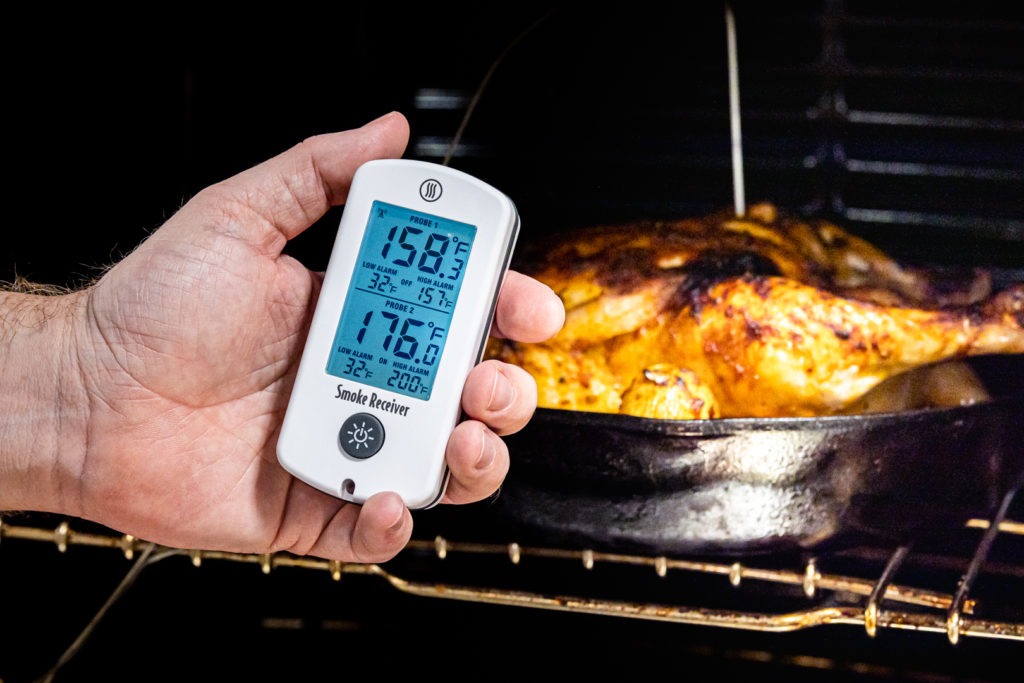
To make sure the chicken is done safely and with optimal juicy tenderness, it’s best not to trust a time measurement but to use a leave-in probe thermometer like the Smoke™ 2-channel oven alarm to track the temperature of both the breast and thigh.
Spicy glaze for chicken
The glaze for this chicken is made with a healthy portion of gochujang, the spicy, funky, sweet fermented Korean chili paste. The deep flavor and rich red color make for a dish that is utterly enjoyable. Gochujang can be bought at almost any Asian market and is even becoming available in the Asian food aisles of many regular grocery stores. It is a thick paste that will add depth and heat to any sauce or dish and would be an amazing addition to a homemade barbecue sauce.
The glaze for the chicken is the consistency of a medium-thin paste, achieved by thinning the gochujang with some oil, and is enriched by the addition of grated fresh garlic and ginger.
The sweetness of this glaze is one of the reasons we cook it more slowly: the sugars in the gochujang will burn at a higher temperature, turning the savory coating into an ash-jacket. And no one wants that.
Roasted potato side
The perfect accompaniment for this chicken is cooked with the chicken. Small Yukon Gold potatoes are tossed with the remaining gochujang glaze (diluted with a little more oil) and cooked along with the chicken in the cast iron pan. By the time the chicken is done cooking, they have achieved a creamy, soft texture from cooking slowly in the oil and chicken fat that will drain into the pan. They are, in essence, potatoes confit.
After the chicken comes out of the oven, give the potatoes a slight smashing, just enough for them to split open so that they can absorb the delicious pan juices.
Slow-roasted, chili-glazed gochujang chicken
This recipe is based on Bon Appétit’s Slow-Roast Gochujang Chicken
Ingredients
- 1 4–5 lb whole chicken
- Kosher salt
- Freshly ground black pepper
- 5 Tbsp gochujang (Korean fermented pepper paste)
- ¼ C plus 2 Tbsp olive oil
- 2 heads of fresh garlic
- 1½-inch piece fresh ginger
- 1½ lb small Yukon Gold potatoes (roughly 1½” in diameter)
- 5 scallions
- 2 limes
- 2 tsp honey
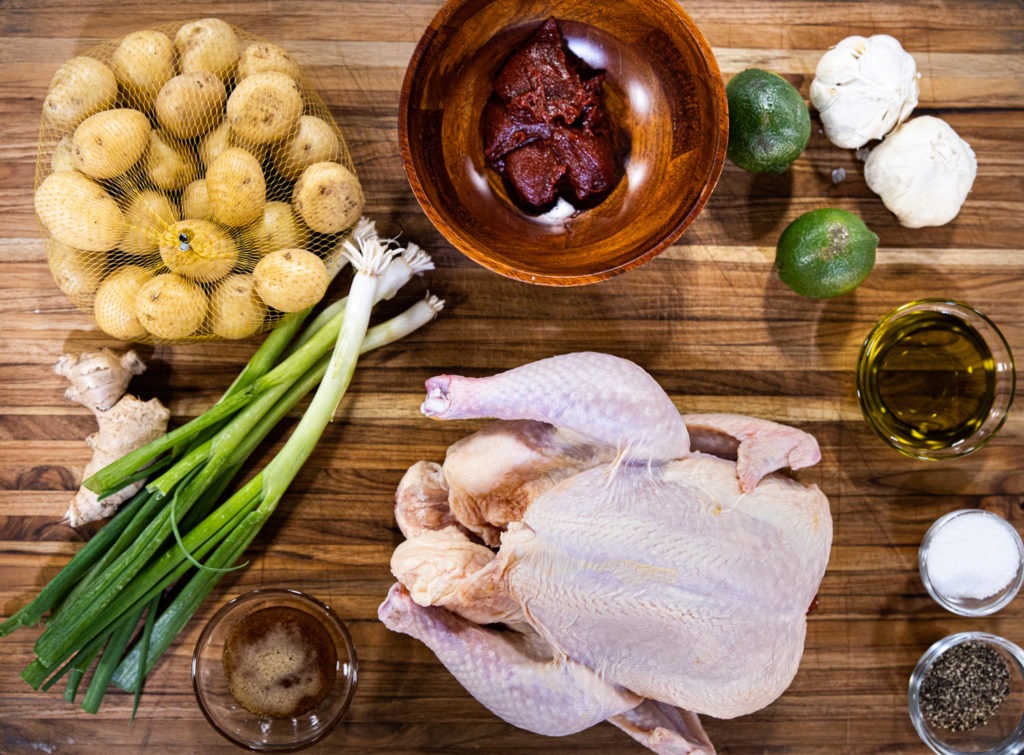
Instructions
- Place a cast-iron skillet in the oven and preheat it to 300°F (149°C).
- Pat the chicken dry and season it liberally with salt and pepper.
- In a bowl, whisk together the gochujang and 1/4 C of olive oil. (For a little more Asian flavor, sub out 1 tsp of the olive oil with toasted sesame oil.)
- Into the paste/oil mixture, grate 3-4 cloves of the garlic from one of the heads. Peel the ginger and grate it into the paste. Mix this all together.
- Cut the heads of garlic in half equatorially. Stuff two of the halves into the cavity.
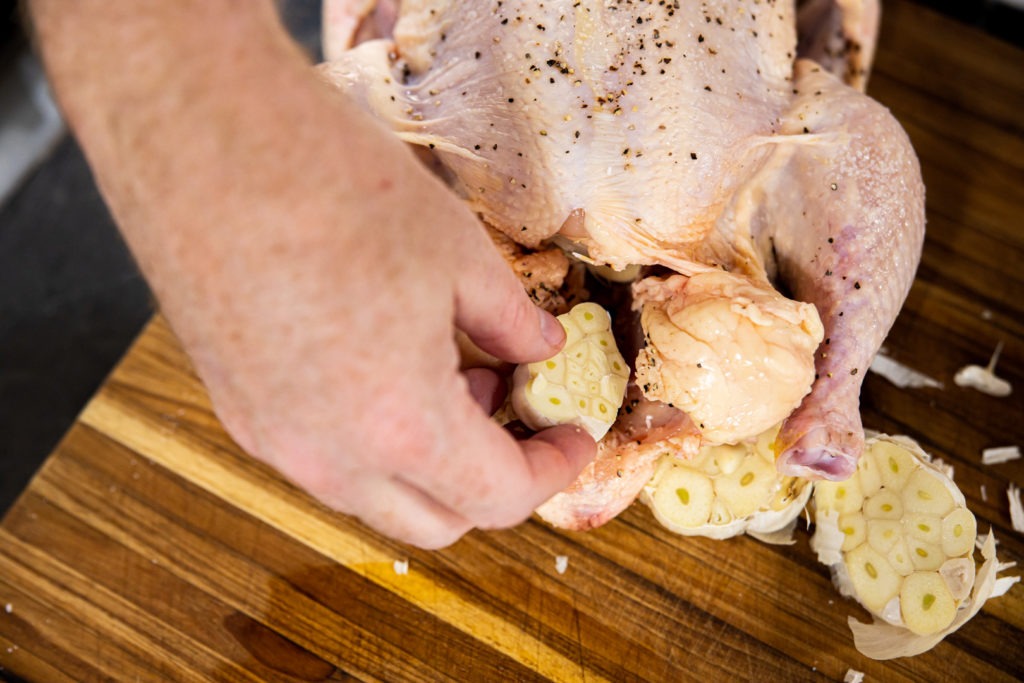
- Use a silicone basting brush to coat the chicken all over with the gochujang oil. You will have quite a bit left over.
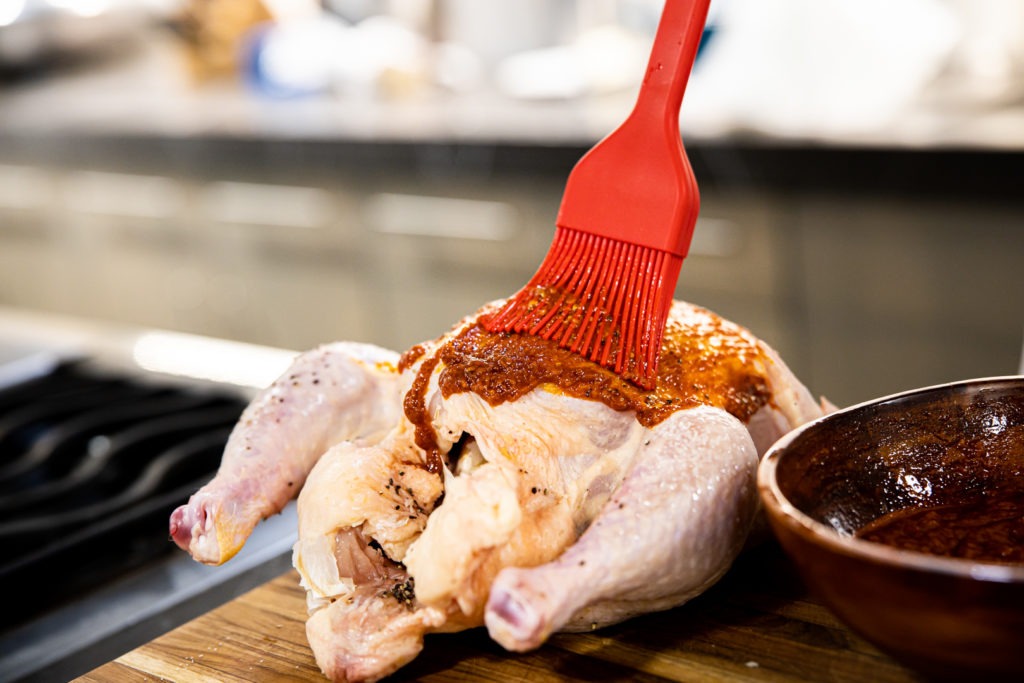
- In a large bowl, coat the potatoes and the remaining two half garlic heads with the remaining oil and season them with salt and pepper. Add the rest of the gochujang/oil/spice mixture to the bowl and toss the potatoes and garlic to coat them in it.
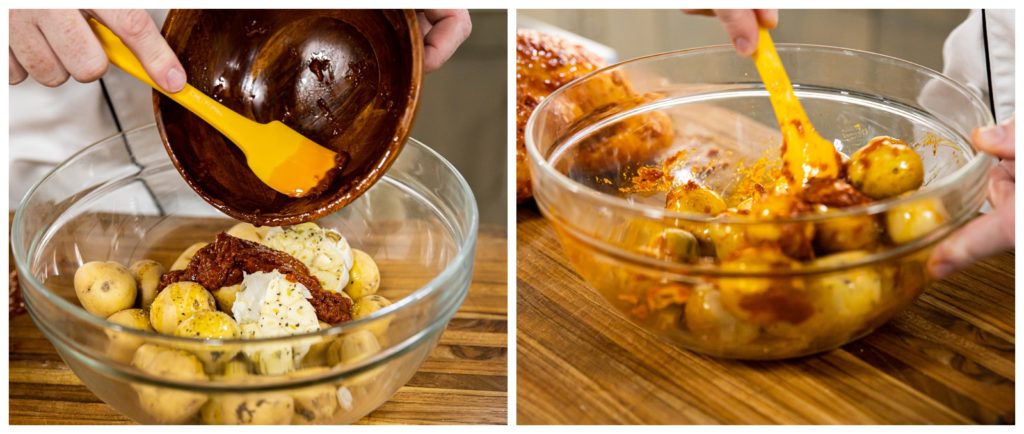
- Remove the (now hot) skillet from the oven. Pour the seasoned garlic and potatoes into the pan. Move the potatoes to the edges of the pan. and arrange the garlic-head halves in the center of the pan, cut-face down.
- Arrange the chicken on top of the garlic. Don’t truss the legs. They will cook better untrussed and the seasoning will cook better between the leg and the body.
- Insert a probe from a leave-in probe thermometer into the deepest part of the breast. If you have a Smoke, even better. Put a probe into the breast and another into the deepest part of the thigh, too. Set the high alarm on the breast probe for 157°F (69°C). The high temp alarm for the thighs is less relevant because we don’t mind if the thighs get much hotter. I set it for 200°F (93°C).
- Place the pan in the oven and roast the chicken and potatoes slowly. Stir the potatoes once or twice during cooking.
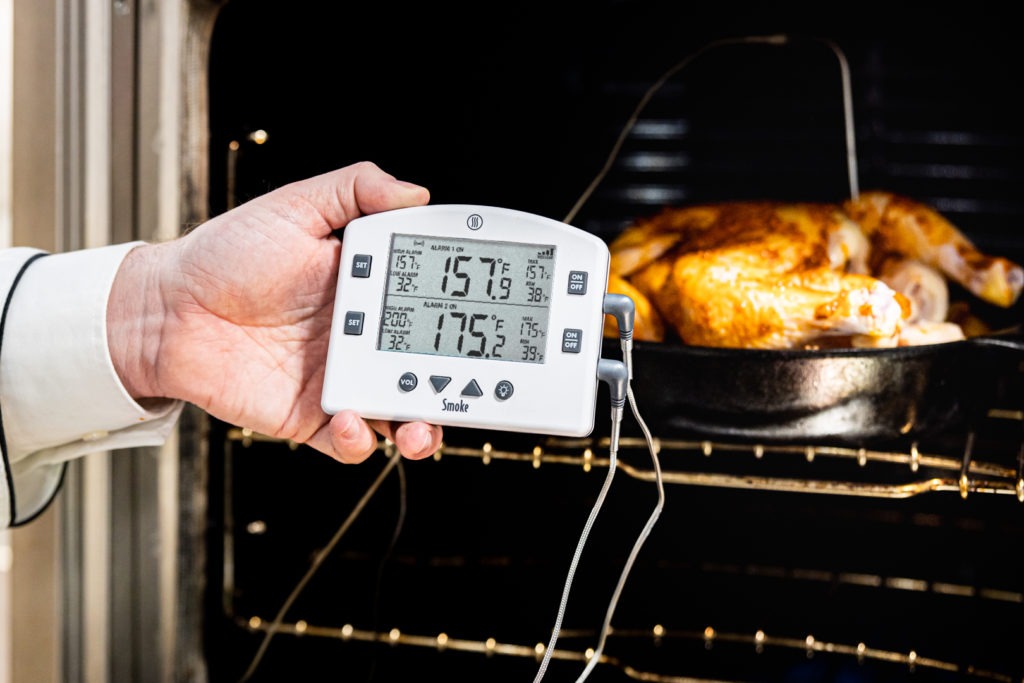
- While the chicken cooks, cut the limes in half, and one of the halves into wedges. Slice the scallions.
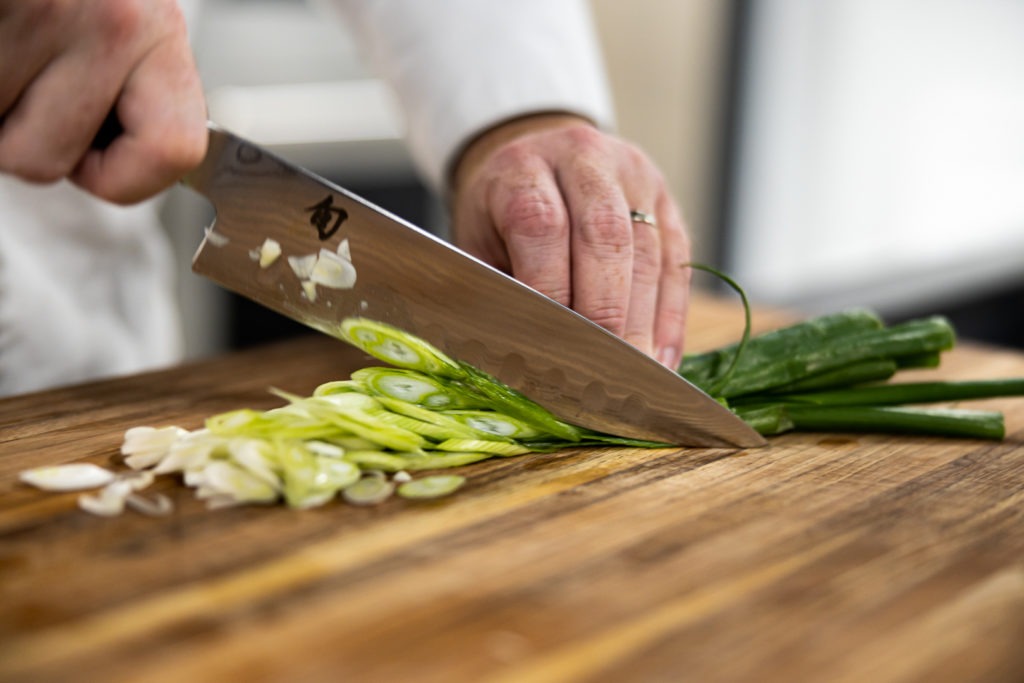
- Mix the honey with the juice of half of one of the limes.
- When the alarm sounds (after about 2–2½ hours), verify the temperature with a Thermapen®. Remove the pan from the oven.
- Move the chicken to a cutting board to rest.
- Pour the lime juice/honey mixture over the potatoes and smash them all lightly with a spoon, just enough to split them.
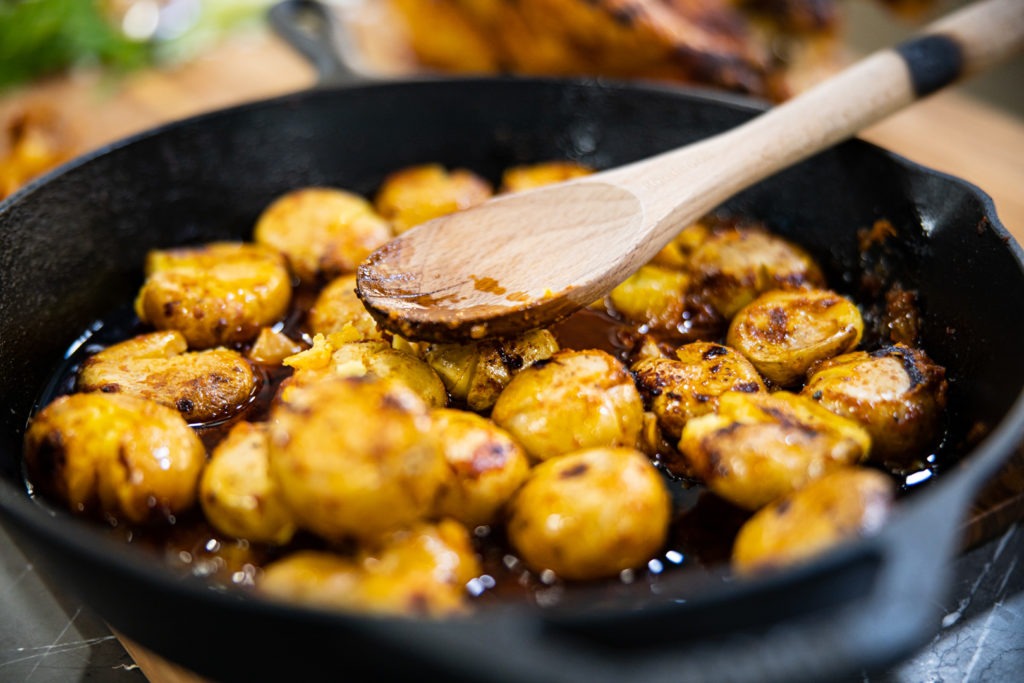
- Carve the chicken.
- Toss the sliced scallions with the potatoes and arrange the chicken on top for serving. Scatter with remaining lime halves and wedges.
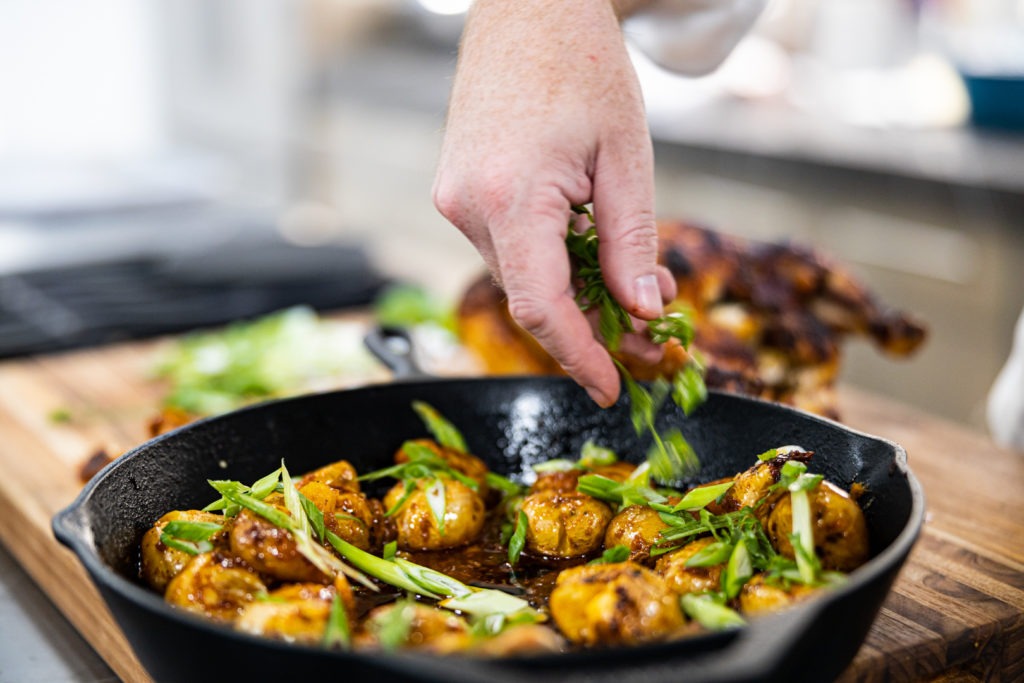
- Serve. Maybe with some bread for mopping up those sauces…
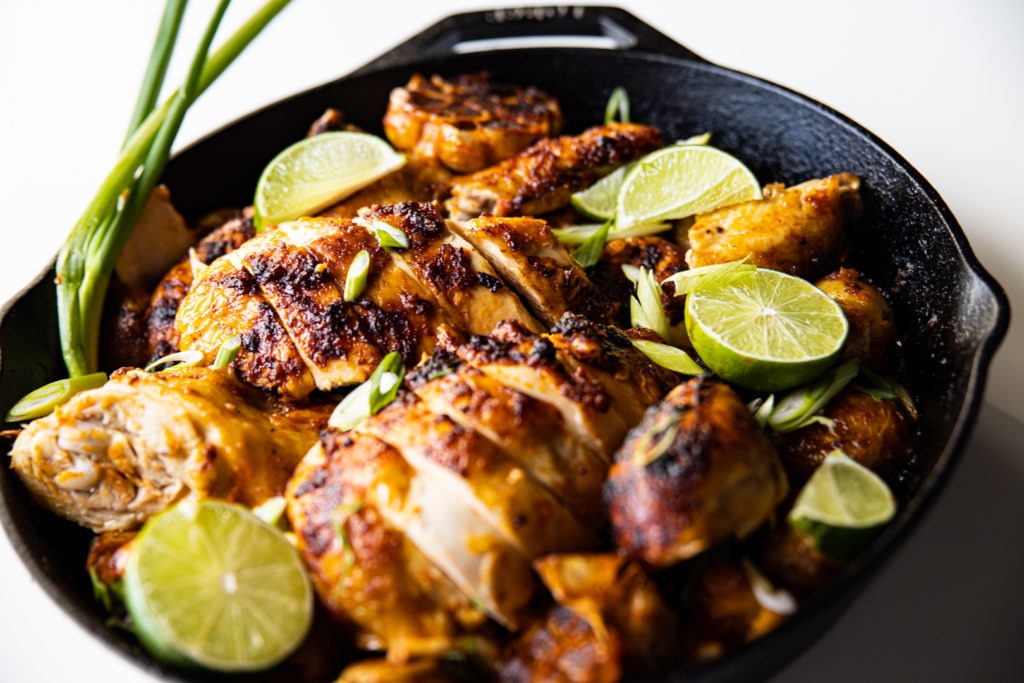
Careful thermal thinking saves this dish from dry breasts or gummy thighs. Preheating the pan and using an alarm thermometer like the Smoke to track the temperatures will give you superior results. And what results! Your winter feast or Sunday dinner will be elevated far beyond what your family expected with this ultra-tender, supremely savory dish. Plus, it fits easily within your New Year’s dietary limits. Enjoy!
Shop now for products used in this post:
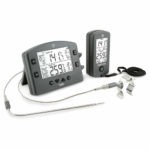 |
|
|---|---|
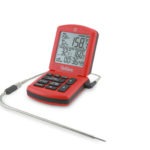 |  |


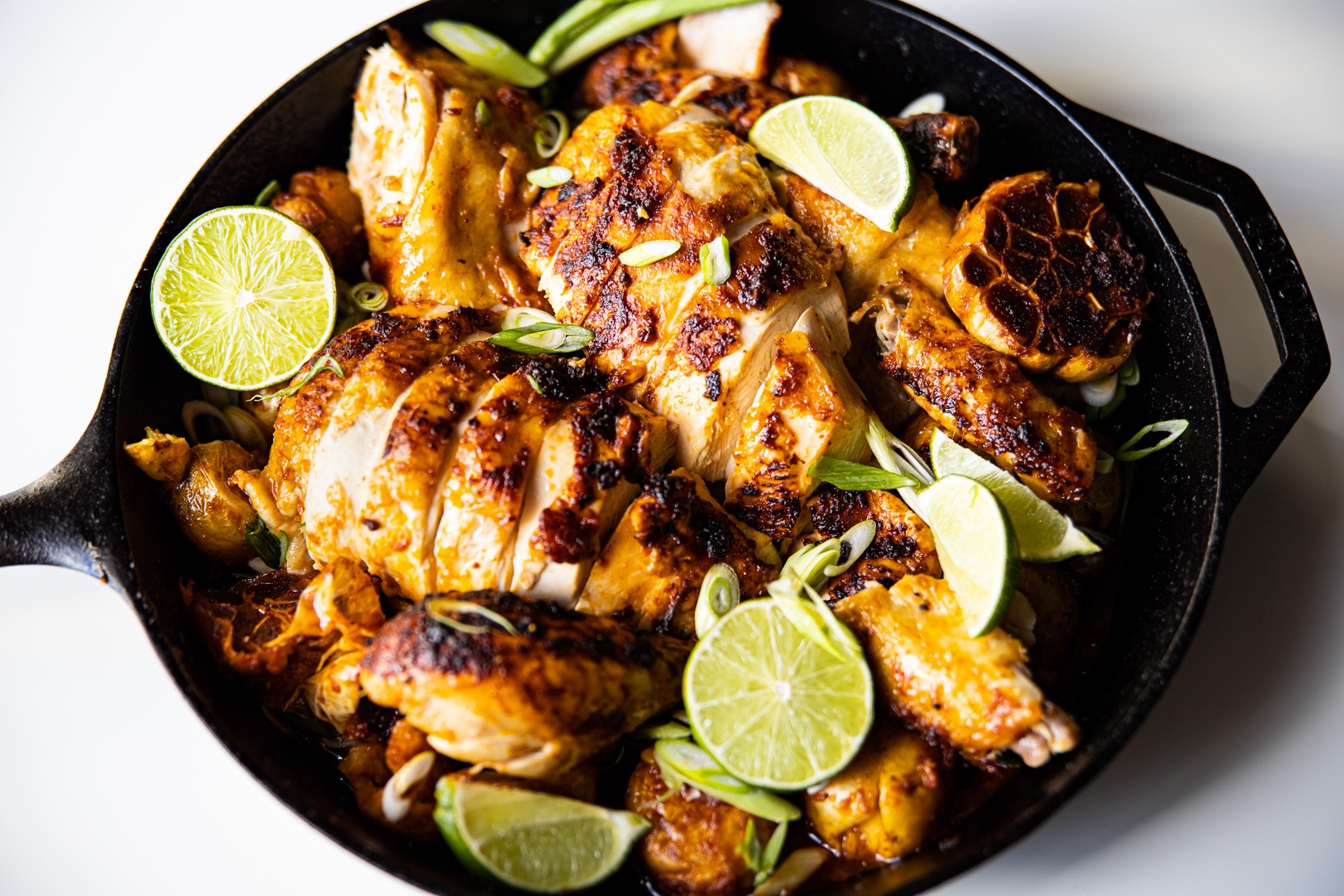
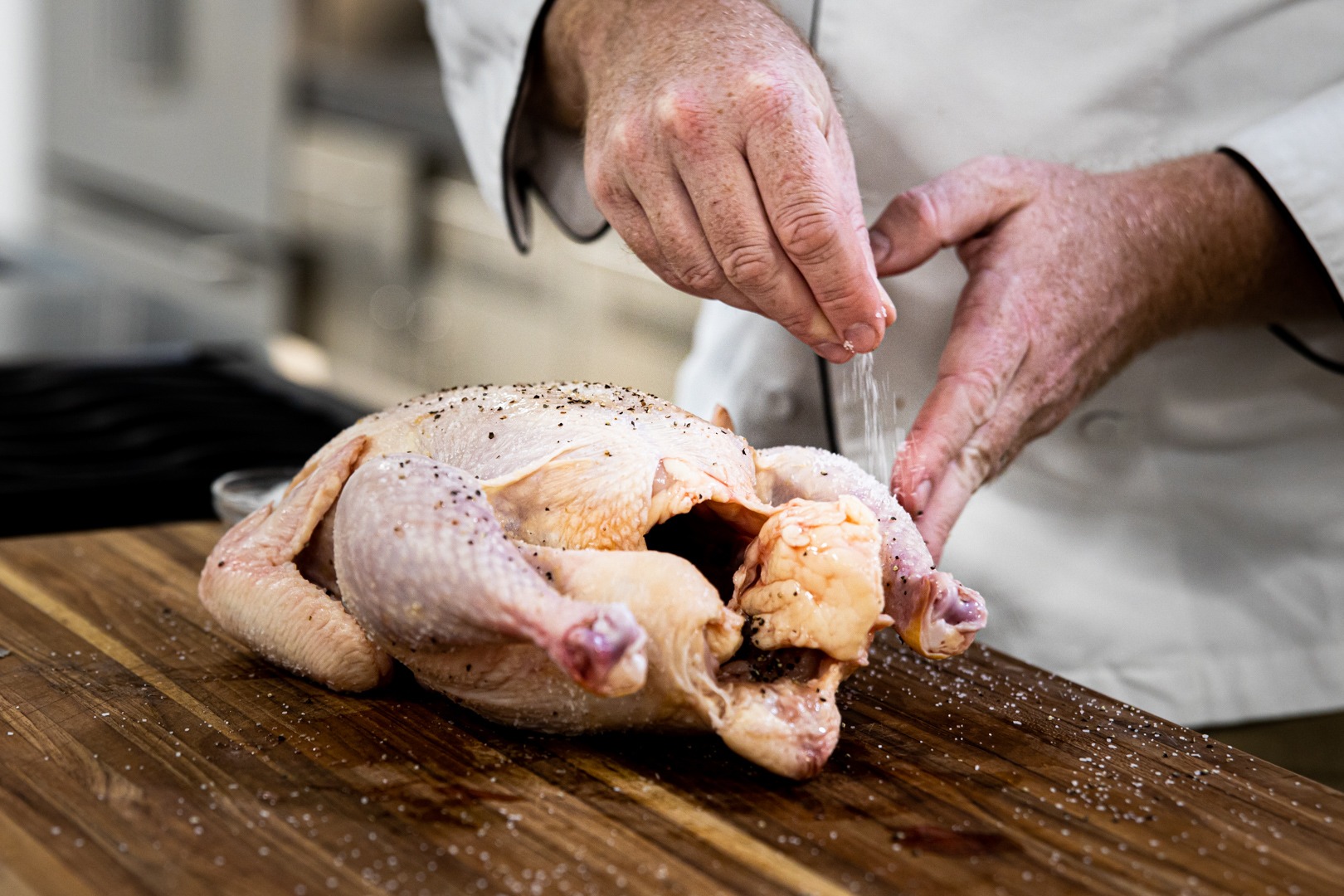
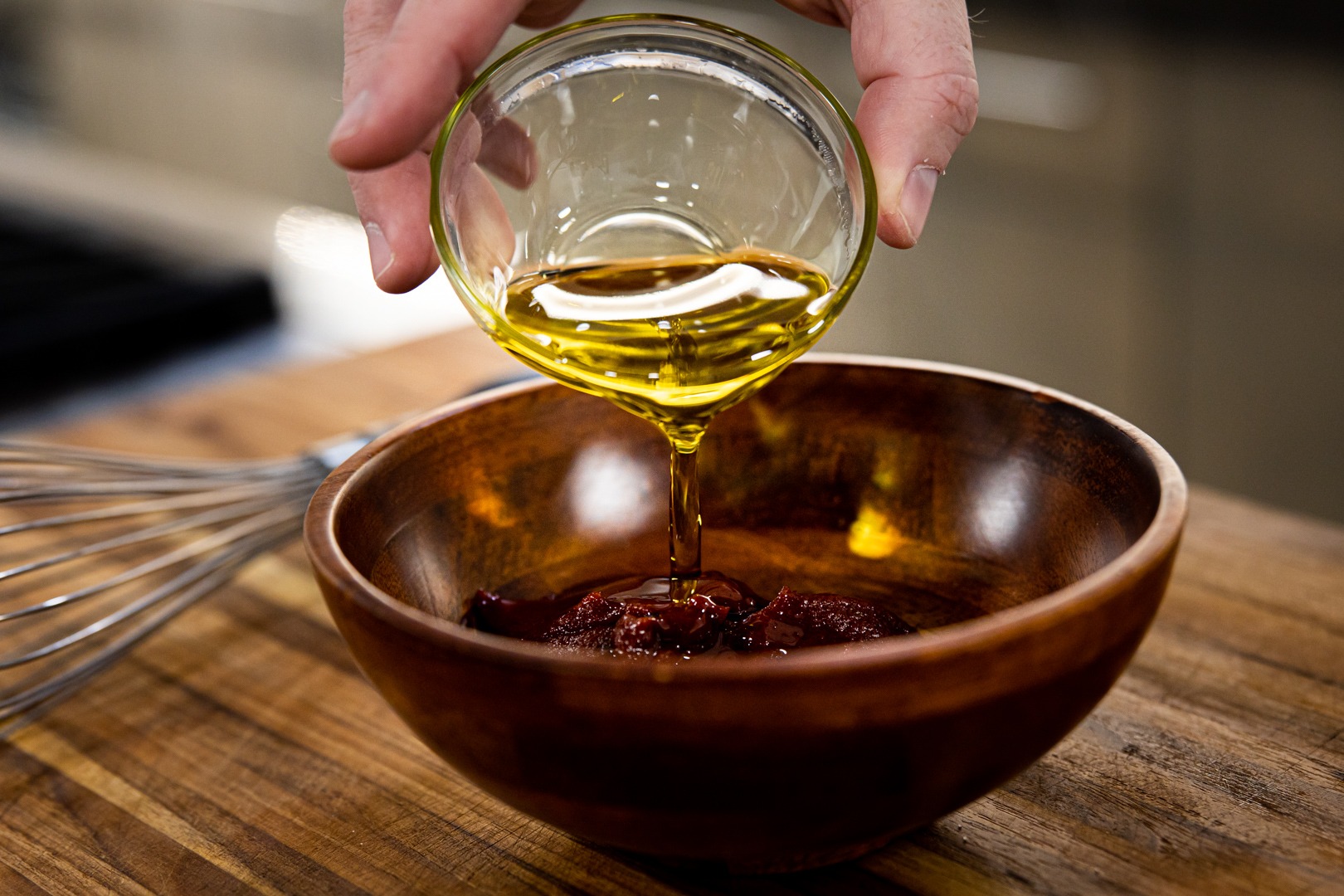
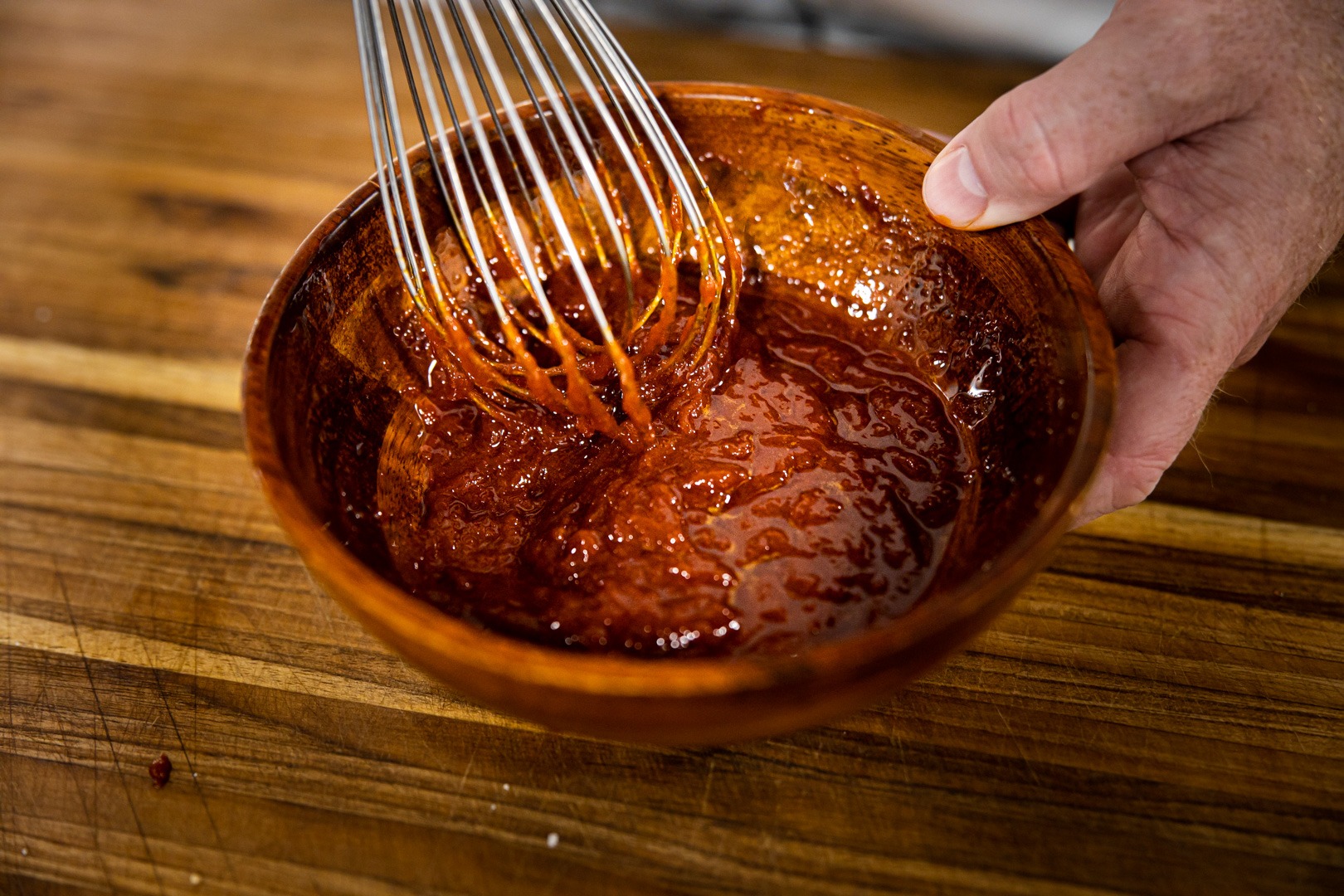
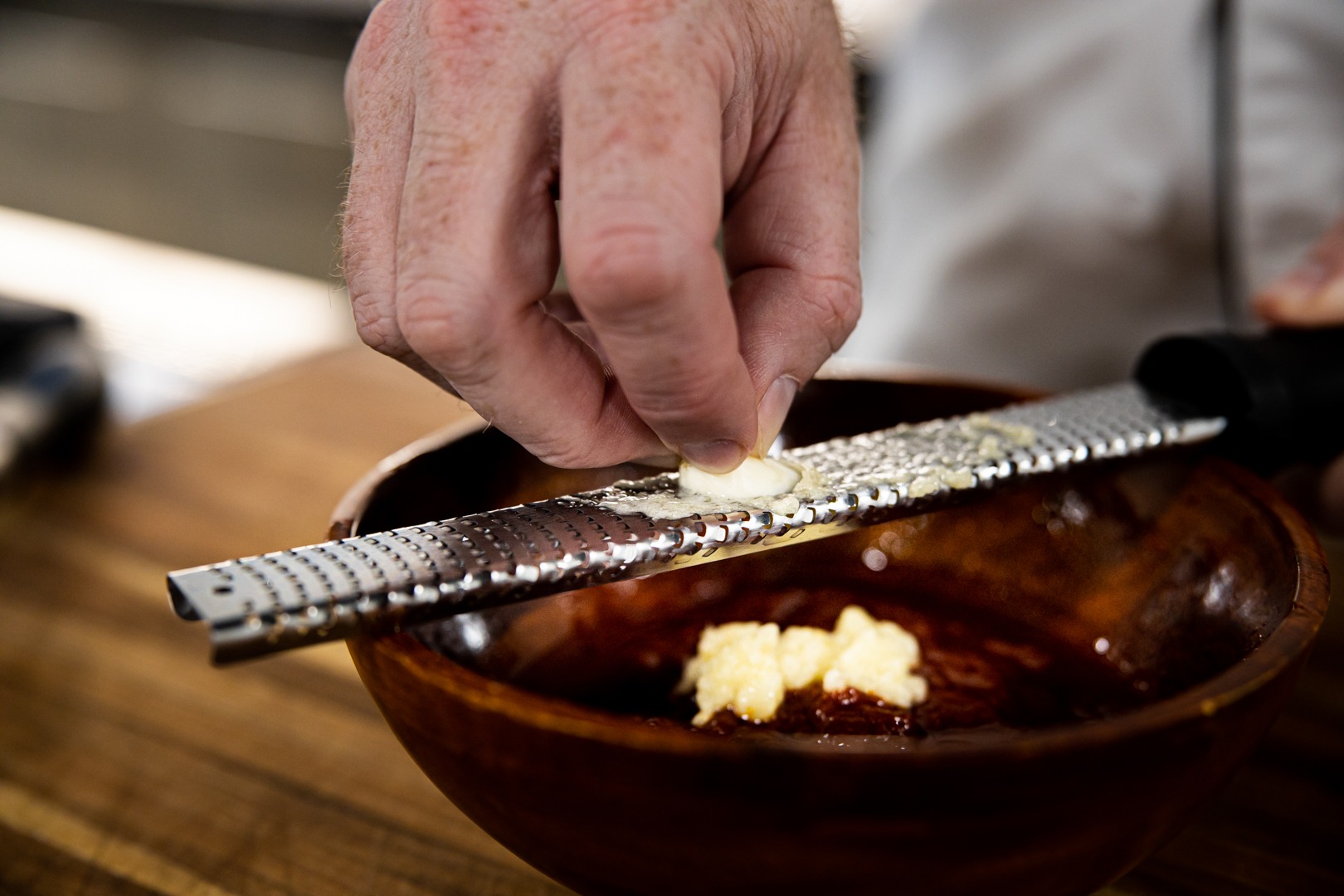
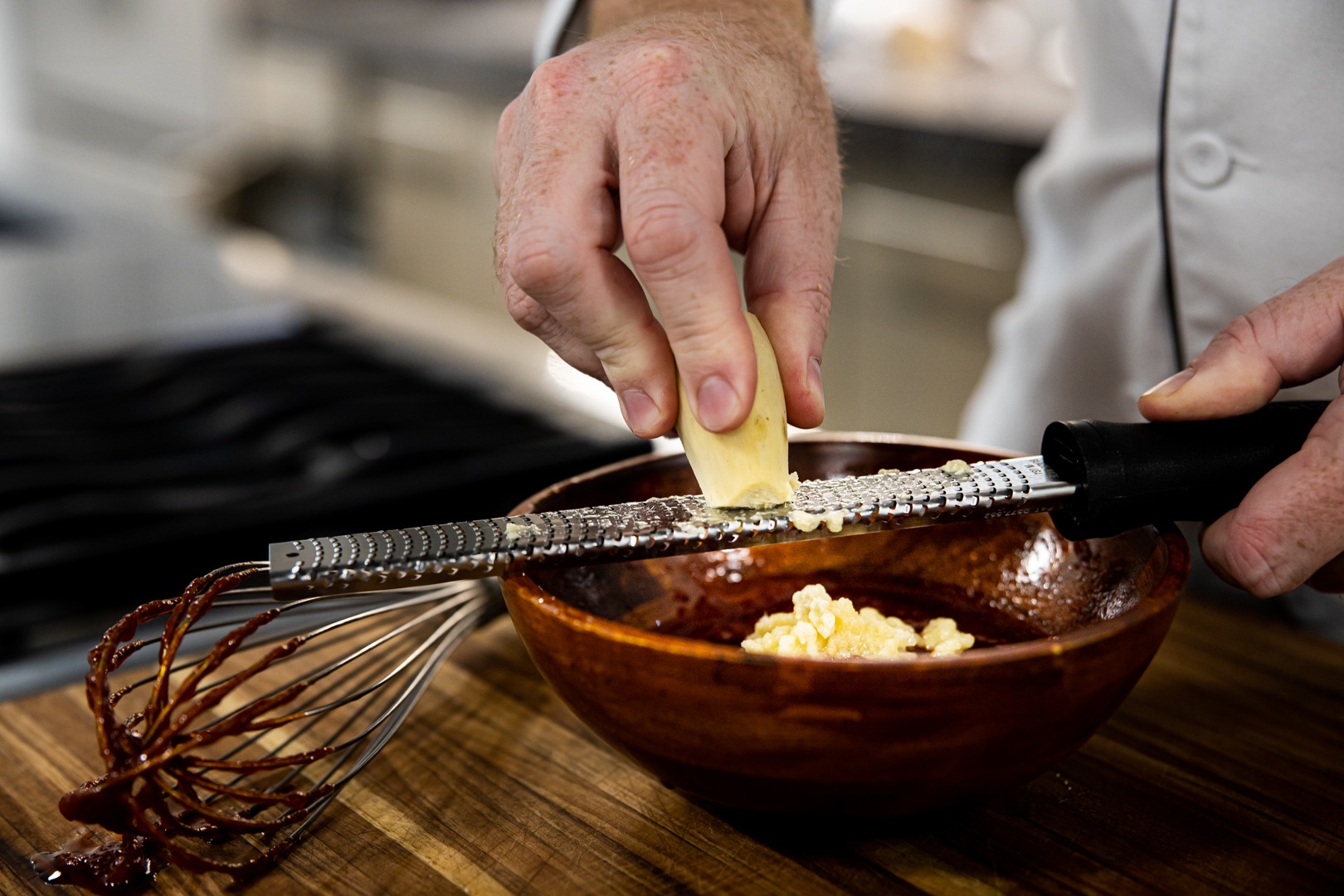
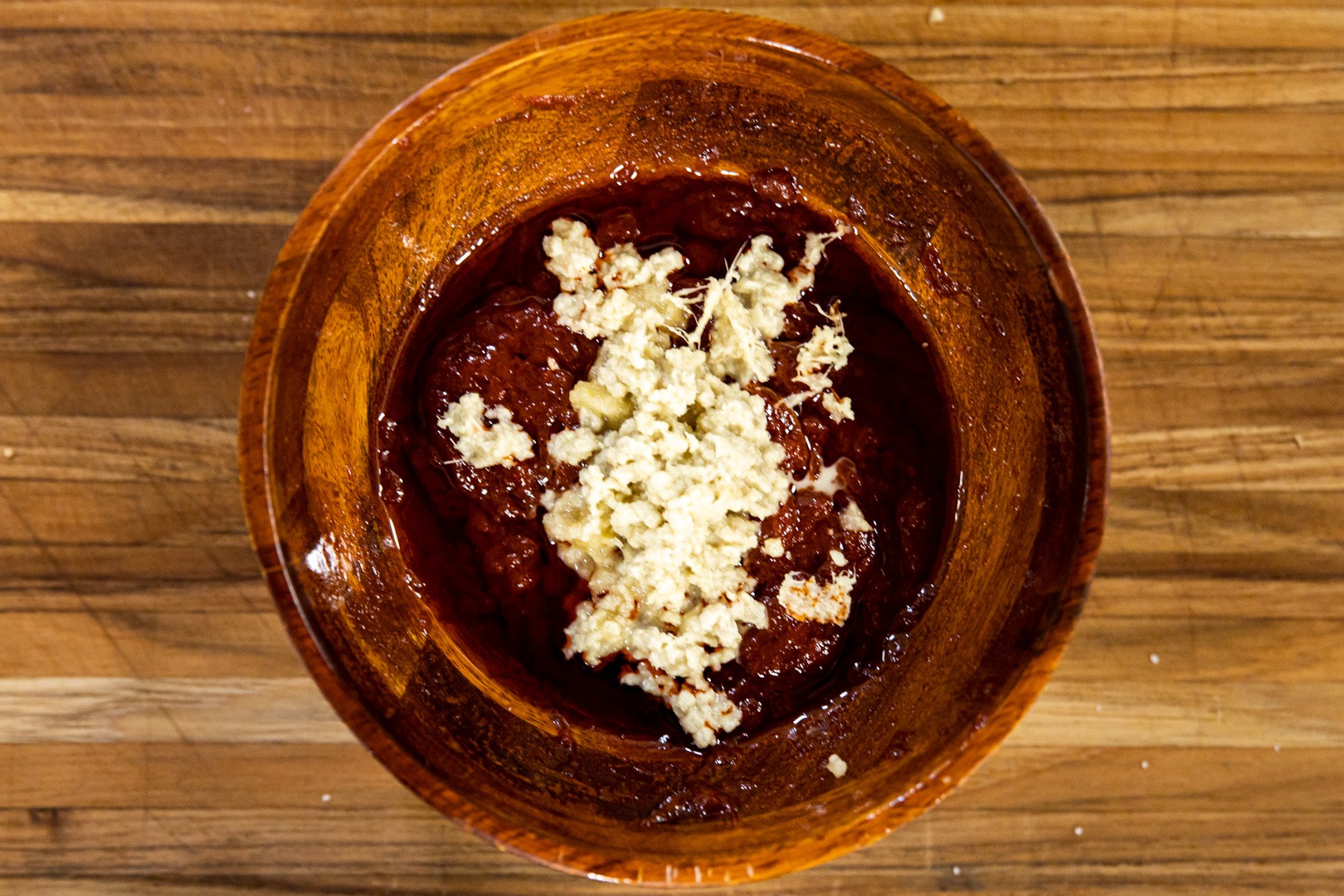
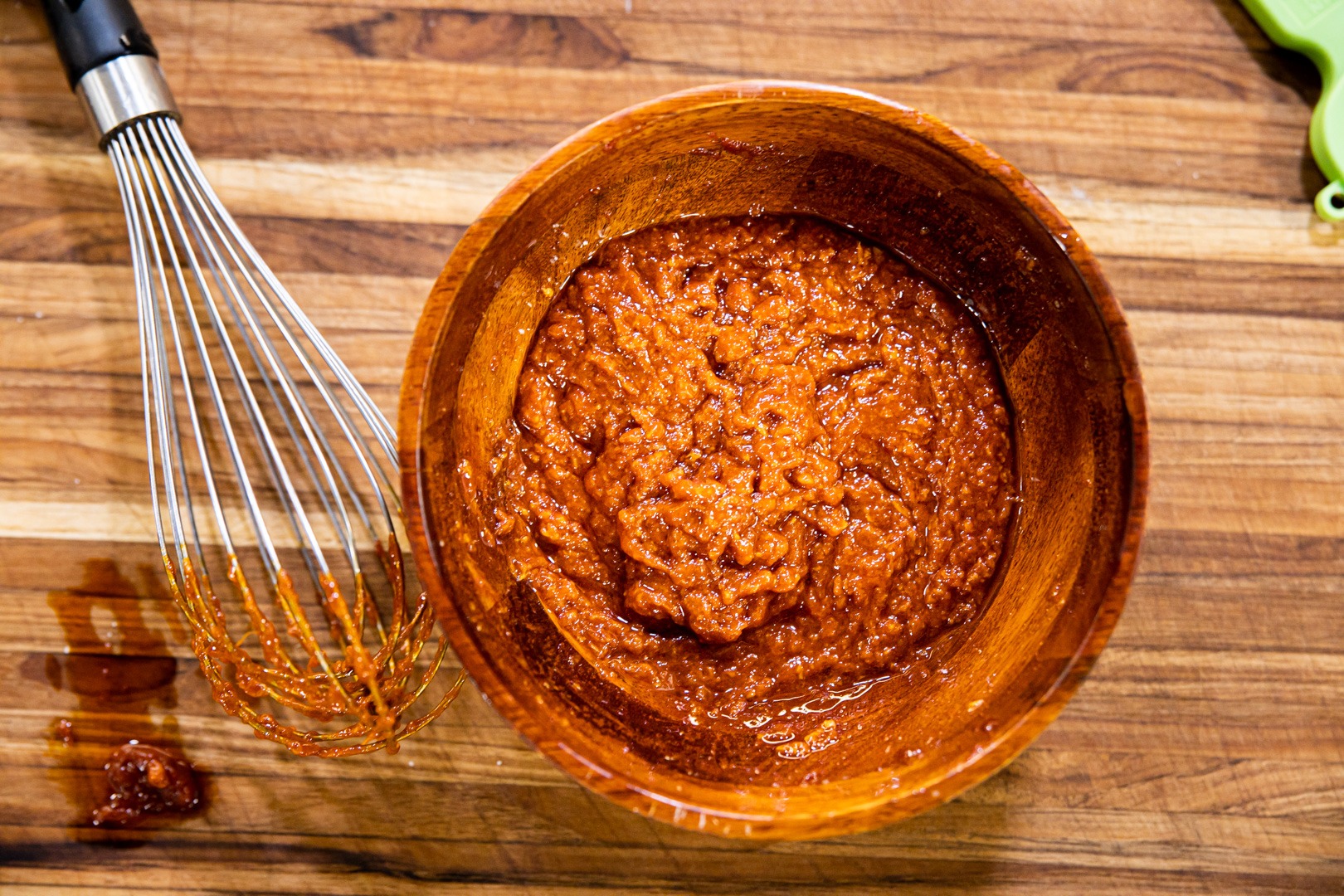
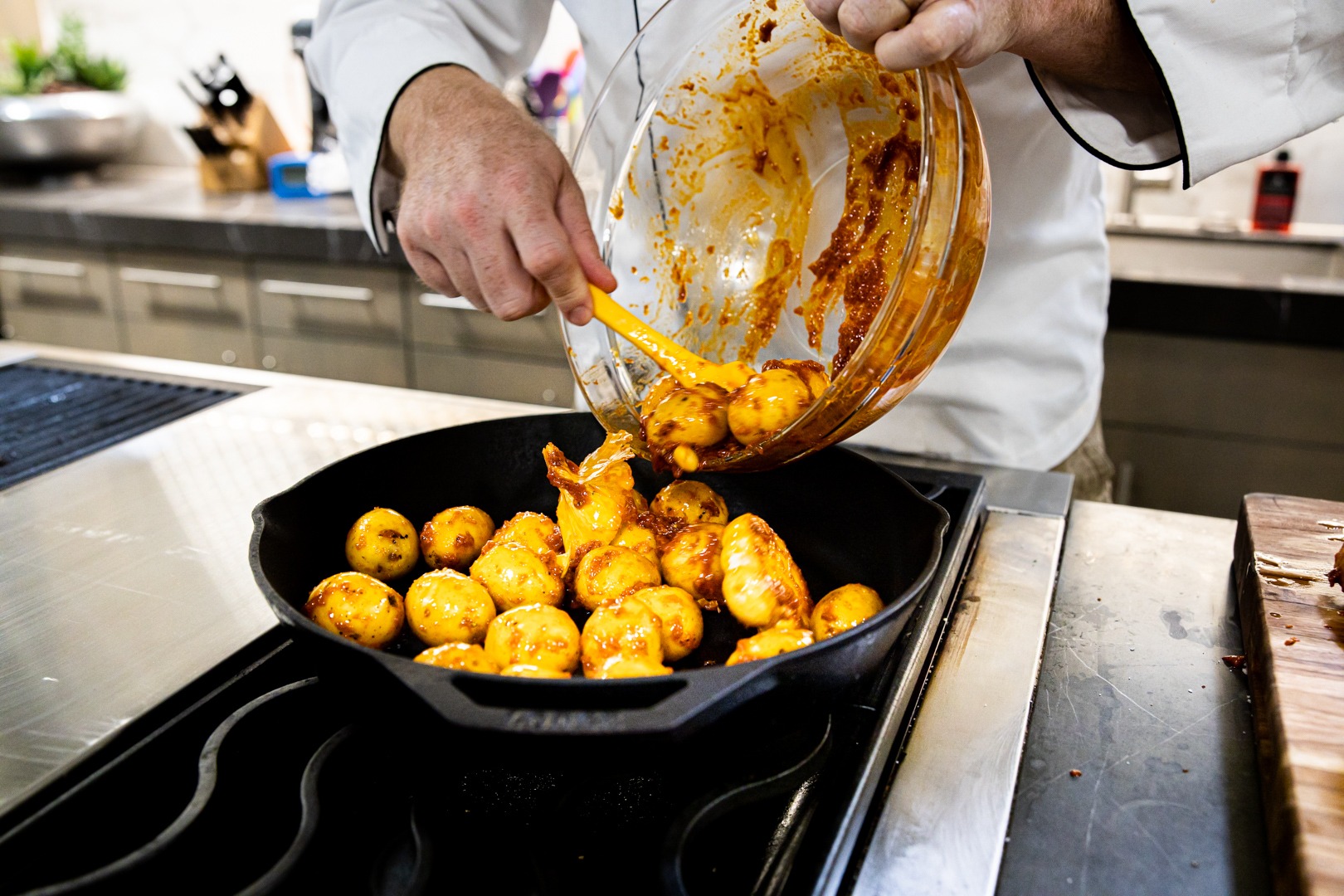
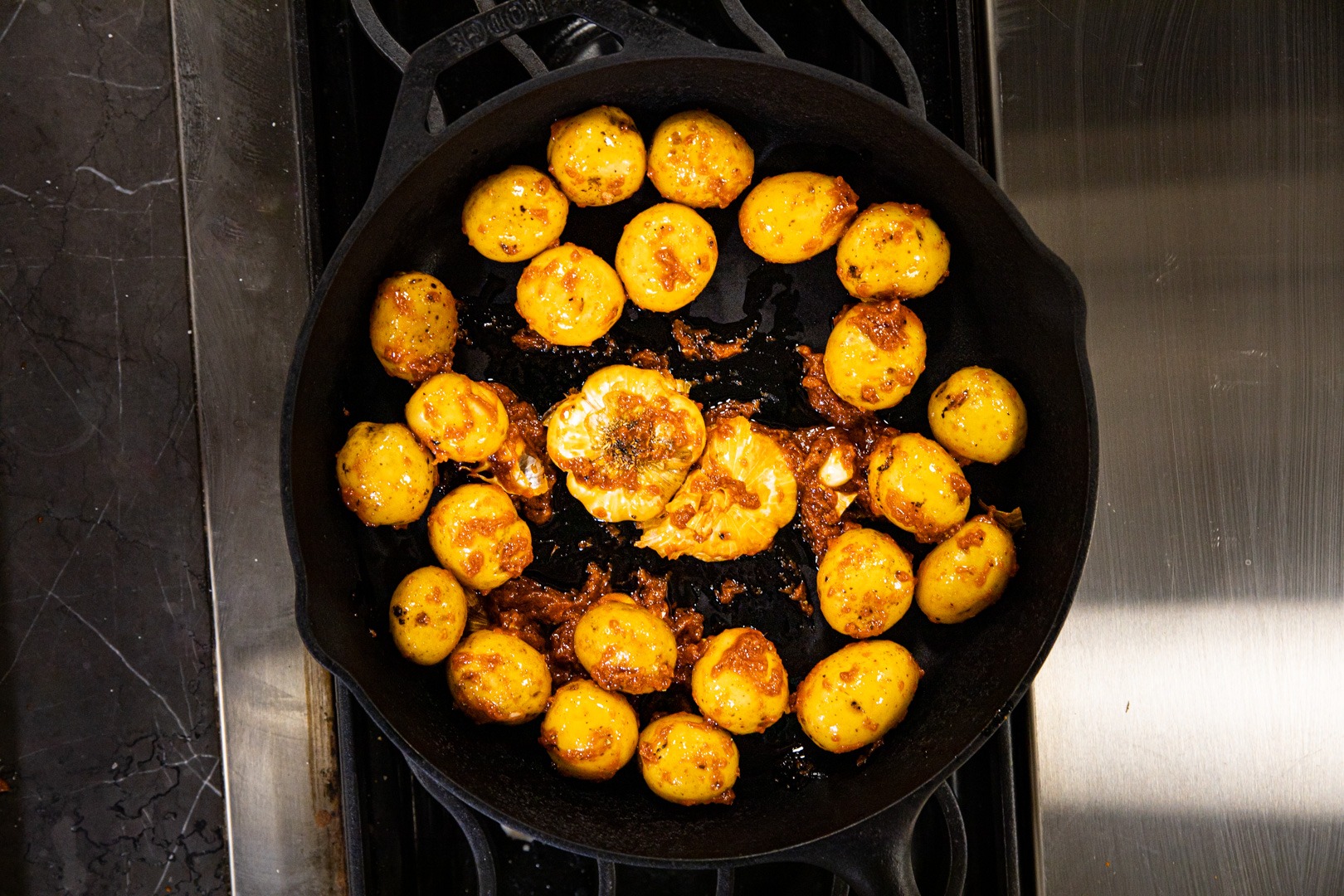
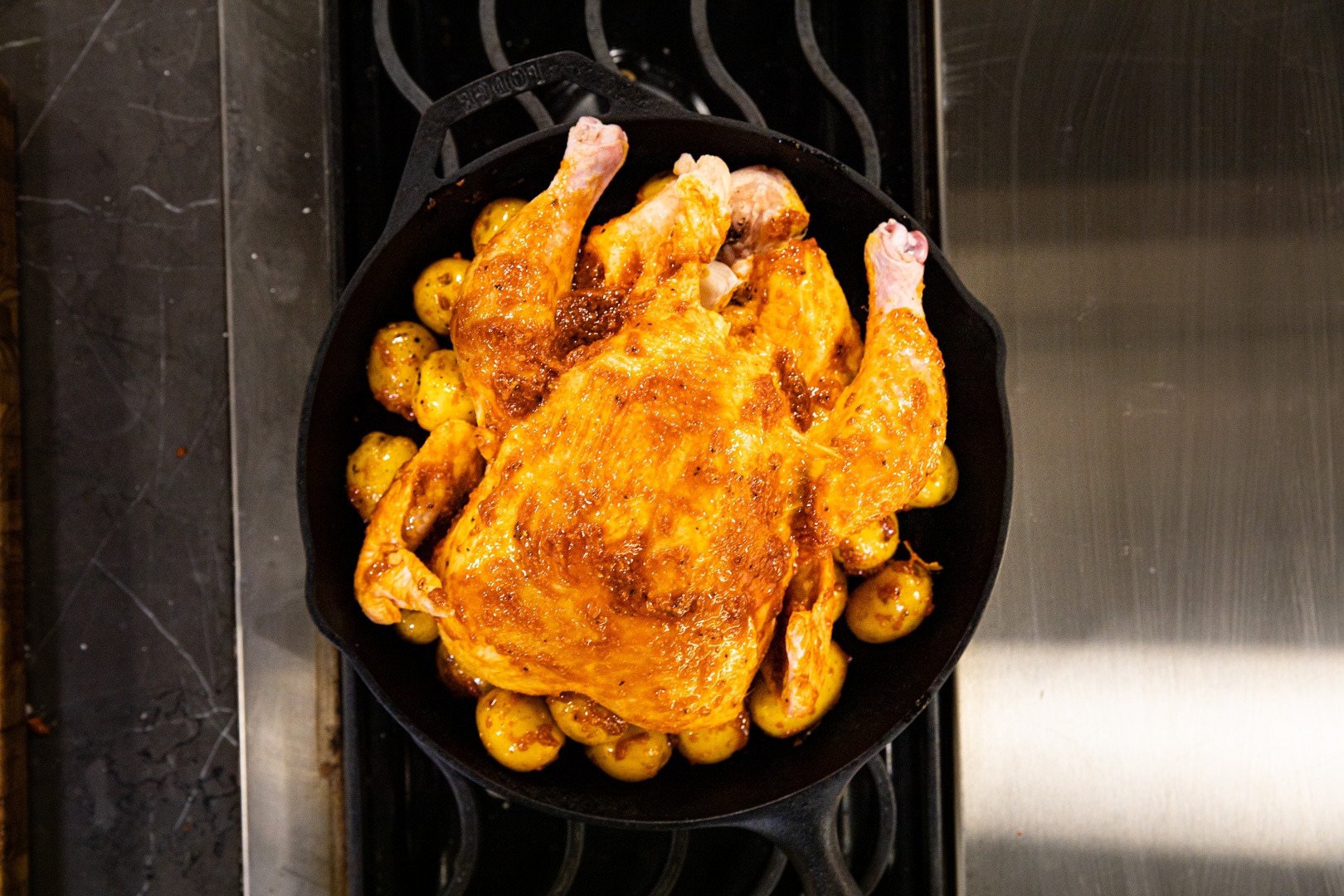
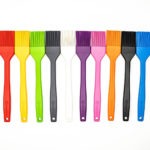
That looks like a perfect Sunday dinner and I only have to find some of that paste. I like the idea of toasted sesame oil as well. I’ve used it many times and appreciate the additional layer of flavor that it adds to a dish. Always on the lookout for a new single pan dinner recipe that delivers robust flavors. Thanks!
What size of cast iron skilled do I use for the slow cooked Korean Paste chicken with Yukon patatoes?
A 12-inch skillet is great. A 10-inch will probably do.
The intro says to start with the pan in a 500° oven and lower the temp when the chicken goes in, but the recipe steps omit that, they just say to preheat the oven to 300° and proceed from there.
When I go back and reread that paragraph, I see that I didn’t write that clearly enough. For a standard roast chicken, we recommend the high-then-lower approach. But for this version with the sticky glaze and the potatoes that need to cook also, it’s just a straight 300°F cook the whole time.
Oh boy this was good! I live alone and rarely roast an entire chicken for myself but we’re expecting snow later today so I was more than happy to stick something in the oven to make the house warm and cozy. I will definitely make this again and will surely make it for guests in the future!
Lynne,
Fantastic! I’m so happy you enjoyed it.
Greetings from Sierra Nevada and from an absolute addict of Thermoworks tools,
Regarding the Spicy-glazed roasted chicken,
How to stir the potatoes without removing the chicken each time? Do you guys have some secret “chicken levitator” tool we haven’t seen yet? I’ll take it.
Very best from ski country, and I’m headed to buy the chicken.
Gary
Gary,
I just kind of dug around under the chicken with a spoon. Having made this a couple times now, I can say that trying to turn the taters once is a great idea and a total benefit to the cook, but if you don’t want to hazard it, they’ll turn out pretty dang good anyhow.
The recipe says to put 2 probes in (breast at 157deg and thigh at 200deg.) Then it says to take the chicken out when THE alarm goes off. Question is: which alarm, breast at 157 or thigh at 200. If “breast at 157, how will the undercooked thigh ever get to 200?
It’s ok if the thigh gets as high as 200°F, but really only needs to attain a temp of about 175°F. By preheating the pan, we jumpstart the thighs, easily getting to 175°F while the breasts only reach 157°F.
The second probe is more informative than it is instructive when using this method. In working on this post, I tried the recipe without preheating the pan and used a ChefAlarm. When the alarm sounded for the breast, the thighs were barely at 155°F. By preheating, that is avoided. By using a second probe, you can watch to make sure it’s going well.
It looks like you put the chicken in breast side up?
Yes!
Ok, so what do you do with the heads of garlic? I keep looking for the instruction that says to squeeze out the cloves and …. ? But no mention, and even the 2 halves that cook under the chicken disappeared from your photos. Are they just for flavor?
Susan,
They are just for flavor, but squeezing them out of the heads and onto some crusty bread with the dish would be amazing. I also just squeezed them out and ate them with bites of chicken.